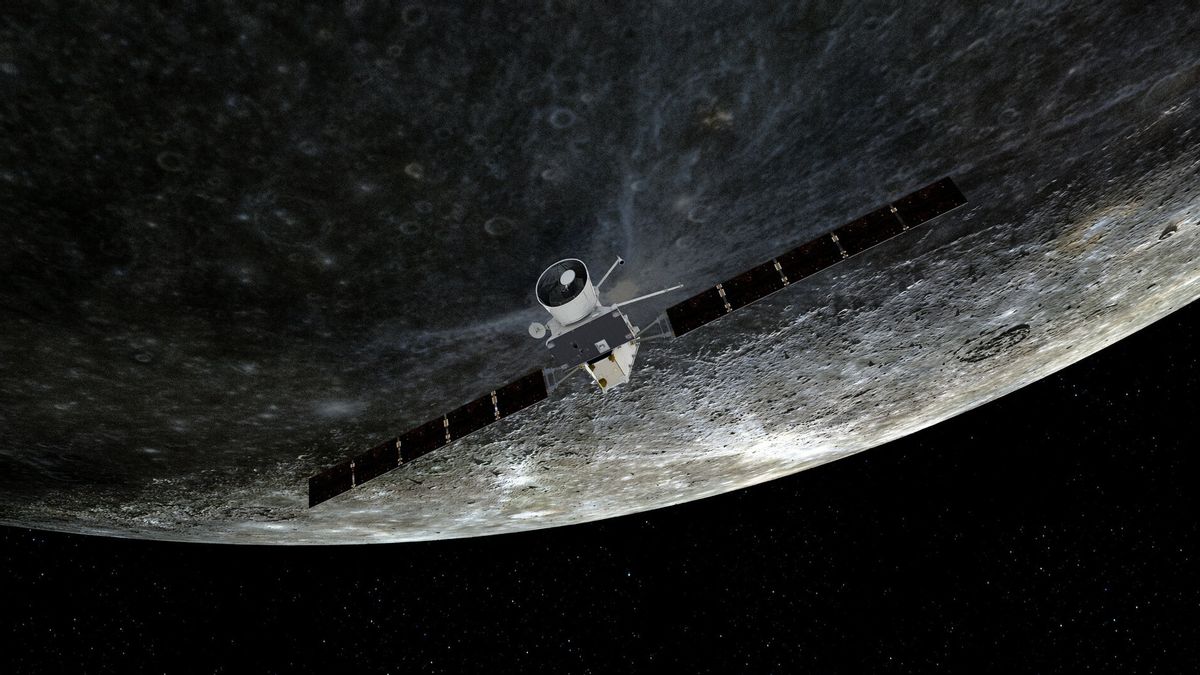JAKARTA - After launching in 2018, the BepiColombo mission is now back to fly across Mercury's flybys, which passes through the planet's surface at an altitude of about 236 km.
BepiColombo is a mission carried out by the European Space Agency (ESA) and the Japan Space Agency (JAXA) to enter the orbit of the Mercury Planet by 2025.
This is the third time that the six gravitational aid flybys in Mercury have been guided by the ESA spacecraft's operations team.
Flybys, needed to help Bepi Colombo fight the enormous gravitational pull from the Sun to help him get on track through the inner Solar System.
As BepiColombo begins to feel the gravitational pull of Mercury, Mercury will move at a speed of 3.6 km/second relative to the planet. That's more than half the speed it approximated during the previous two Mercury cross-flys, "said ESA aviation dynamics expert Frank Budnik in a statement, quoted Tuesday, June 20.
That way, in the end the spacecraft will lose enough energy to be captured into Mercury orbit in 2025.
"Our spacecraft started with too much energy because it was launched from Earth and, like our planet, orbited the Sun. To be captured by Mercury, we need to slow down, and we use Earth, Venus, and Mercury gravity to do so," Budnik explained.
Furthermore, BepiColombo will approach the planet's nightside, and be recorded by a spacecraft monitoring camera about 13 minutes later.
After this cross-fly, BepiColombo will enter a very challenging part of its journey to Mercury, gradually increasing the use of solar electricity propulsion through an additional period called a thrust arc to continue to put a brake on the very large gravitational pull of the Sun.
SEE ALSO:
This thrust arc can last from a few days to two months, with longer bows being regularly interrupted for optimizing navigation and maneuvering.
To be safe, and to ensure there is no possibility of a mission ending in a collision course with Mercury, the latest maneuver is designed for BepiColombo to pass through a rocky planet at a slightly higher altitude than needed.
Upon arrival in Mercury in December 2025, two BepiColombo science modules, namely the ESA Mercury Planetary Orbiter (MPO) and the JAXA Magnetospheric Orbiter (MMO) will be separated from the Mercury Transfer Module (MTM) and enter complementary orbits around the planet.
The main science cameras will be protected to separate spacecraft modules but during cross-flying, images will be taken by the BepiColombo monitoring camera.
The English, Chinese, Japanese, Arabic, and French versions are automatically generated by the AI. So there may still be inaccuracies in translating, please always see Indonesian as our main language. (system supported by DigitalSiber.id)

















